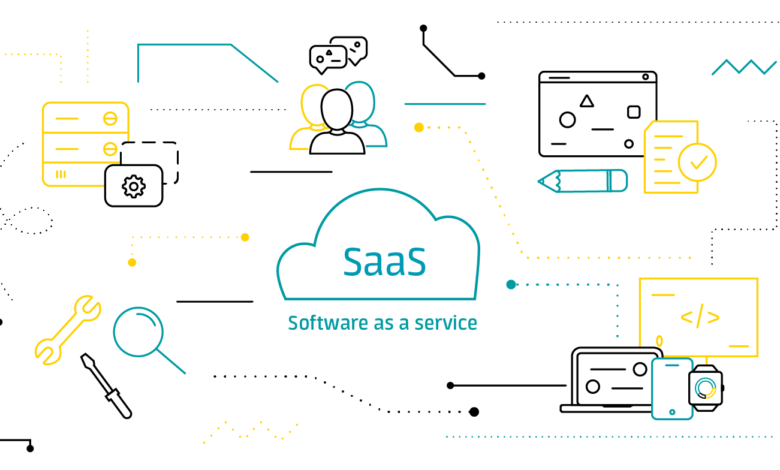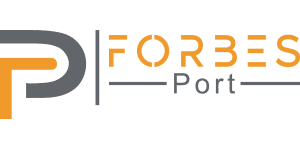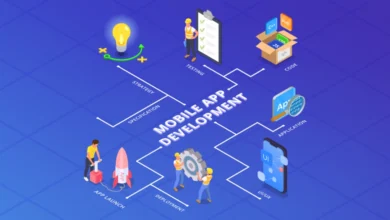What is SaaS? – Software as a Service

What is software as a service?
Software as a Service, commonly known as SaaS, is a cloud application development model that allows users to access and use software applications over the Internet. Instead of purchasing and installing software on individual computers or servers, users can simply subscribe to a SaaS provider and access the software through a web browser.
How Does SaaS Work?
SaaS works by hosting software applications on remote servers, which are managed and maintained by the SaaS provider. Users can access the software through a secure login and use it as needed, without the need for any local installation or maintenance.
Examples of popular SaaS Products:
1. Salesforce
2. Slack
3. Dropbox
4. Zoom
5. HubSpot
6. Google Workspace (formerly G Suite)
7. Adobe Creative Cloud
8. Shopify
9. Trello
10. Microsoft 365
A Brief History of SaaS
1. The Origins of SaaS
SaaS, or Software as a Service, has its roots in the early days of computing. In the 1960s and 1970s, mainframe computers were the dominant form of computing, and companies would spend time on these large machines to run their software applications.
This was the precursor to the SaaS model, as companies were essentially renting access to software rather than owning and running it on their own machines.
2. The Rise of Client-Server Computing
In the 1980s and 1990s, client-server computing became popular. This model involved a central server that housed the software and data, while individual client computers accessed and interacted with the software through a network.
This allowed for more distributed computing and increased flexibility but still required companies to manage and maintain their own software and hardware infrastructure.
3. The Birth of SaaS
The true birth of the SaaS model can be traced back to the late 1990s and early 2000s. With the advent of the internet and advancements in web technologies, companies began to explore the idea of delivering software applications over the Internet.
This allowed for easier deployment, updates, and maintenance, as well as the ability to access software from any device with an internet connection.
4. Salesforce and the SaaS Revolution
One of the pioneers of the SaaS model was Salesforce, founded in 1999. Salesforce offered a customer relationship management (CRM) software solution that was delivered over the Internet.
This marked a shift in the software industry, as companies no longer needed to purchase and install software on their own servers. Instead, they could simply subscribe to a service and access the software through a web browser.
5. The Growth of SaaS
Following Salesforce’s success, the SaaS model began to gain traction. Companies realized the benefits of SaaS, such as lower upfront costs, scalability, and easier updates and maintenance. This led to the emergence of numerous SaaS providers across various industries, offering a wide range of software solutions.
6. SaaS Today
Today, SaaS has become the dominant model for delivering software applications. From productivity tools like Microsoft Office 365 to project management software like Asana, SaaS solutions are widely used by businesses of all sizes. The SaaS market continues to grow, with new innovations and advancements constantly being made.
7. The Future of SaaS
As technology continues to evolve, the future of SaaS looks promising. With the rise of artificial intelligence, machine learning, and the Internet of Things, SaaS providers are incorporating these technologies into their offerings to provide even more value to their customers. Additionally, the shift towards cloud computing and the increasing demand for remote work solutions are driving the growth of the SaaS market.
The history of SaaS is a story of innovation and evolution in the software industry. From the early days of mainframe computers to the rise of client-server computing and the birth of SaaS, this model has revolutionized the way businesses access and use software. With its many benefits and continued advancements, SaaS is poised to shape the future of software delivery.
What are the challenges and risks of SaaS?
1. Security Risks: One of the biggest challenges of SaaS (Software as a Service) is the potential security risks. Since the software is hosted on the cloud, there is always a risk of data breaches and unauthorized access. It is crucial for SaaS providers to have robust security measures in place to protect sensitive customer data.
2. Reliability and Downtime: Another challenge of SaaS is the reliance on internet connectivity. If there is an internet outage or server downtime, users may not be able to access the software, causing disruptions in their workflow. SaaS providers need to ensure high uptime and have backup systems in place to minimize downtime.
3. Data Ownership and Portability: When using SaaS, customers often have concerns about data ownership and portability. They may worry about vendor lock-in, where it becomes difficult to switch to a different provider or retrieve their data if they decide to discontinue the service. SaaS providers should address these concerns by offering data export options and clear terms of service.
4. Integration Challenges: Integrating SaaS applications with existing systems can be a complex task. Different SaaS solutions may have different APIs and compatibility issues, making it challenging to seamlessly integrate them with other software. SaaS providers should offer robust integration options and provide support to customers during the integration process.
5. Cost and Scalability: While SaaS can be cost-effective for small businesses, it can become expensive as the user base and usage grow. SaaS providers often charge based on the number of users or usage, which can lead to unexpected costs for rapidly growing businesses. It is important for businesses to carefully consider the pricing structure and scalability options before committing to a SaaS solution.
6. Vendor Reliability: Choosing a reliable SaaS vendor is crucial to avoid potential risks. Some SaaS providers may go out of business or discontinue their services, leaving customers stranded without access to their data. It is important to thoroughly research and choose a reputable vendor with a track record of reliability and customer support.
7. Customization Limitations: SaaS solutions are often designed to be flexible and cater to a wide range of customers. However, this can also mean limitations in customization options. Businesses with unique requirements may find it challenging to customize the software to fit their specific needs. It is important to assess the customization capabilities of a SaaS solution before deciding.
While SaaS offers numerous benefits, it also comes with its own set of challenges and risks. Businesses should carefully evaluate these factors and choose a SaaS solution that aligns with their specific needs and requirements.
Benefits Of Software as a Service (SaaS)
1. Cost Savings: One of the biggest benefits of using Software as a Service (SaaS) is the cost savings it offers. Instead of purchasing expensive software licenses, SaaS allows businesses to pay a monthly or annual subscription fee, reducing upfront costs and making it more affordable for small businesses.
2. Scalability: SaaS allows businesses to easily scale their software usage as their needs grow. With traditional software, businesses often must purchase additional licenses or hardware to accommodate growth. With SaaS, businesses can simply upgrade their subscription to access more features or increase user capacity.
3. Accessibility: SaaS applications are cloud-based, which means they can be accessed from anywhere with an internet connection. This allows employees to work remotely or collaborate with team members in different locations, increasing productivity and flexibility.
4. Automatic Updates: SaaS providers handle all software updates and maintenance, ensuring that businesses always have access to the latest features and security patches. This eliminates the need for businesses to manually update their software, saving time and resources.
5. Integration: SaaS applications are designed to integrate with other software and systems, making it easier for businesses to streamline their processes and improve efficiency. This integration capability allows businesses to connect their SaaS applications with their CRM, accounting software, or other tools, creating a seamless workflow.
6. Data Security: SaaS providers invest heavily in data security measures to protect their customers’ data. This includes encryption, regular backups, and robust security protocols. By using SaaS, businesses can benefit from enterprise-level security without having to invest in expensive security infrastructure.
7. Flexibility: SaaS applications are highly customizable, allowing businesses to tailor the software to their specific needs. This flexibility ensures that businesses can adapt the software to their unique workflows and requirements, improving efficiency and user experience.
8. Easy Collaboration: SaaS applications often include collaboration features that allow multiple users to work on the same project simultaneously. This promotes teamwork and improves communication, making it easier for teams to collaborate and share information.
9. Faster Deployment: With SaaS, businesses can quickly deploy new software applications without the need for extensive installation or configuration. This allows businesses to start using the software immediately, reducing downtime and increasing productivity.
10. Customer Support: SaaS providers typically offer comprehensive customer support, including technical assistance and troubleshooting. This ensures that businesses have access to expert help whenever they encounter issues or have questions about the software.
SaaS pricing
1. Understand your target market
When determining your SaaS pricing strategy, it’s crucial to have a deep understanding of your target market. Consider factors such as the size of the company, its budget, and the value it will derive from your software. This will help you determine the optimal price point that will attract customers while still generating revenue for your business.
2. Value-based pricing
One effective approach to SaaS pricing is value-based pricing. This involves setting your prices based on the value that your software provides to customers. Consider the specific pain points that your software solves and the benefits it offers. By aligning your pricing with the value your customers receive, you can justify higher prices and increase your profitability.
3. Tiered pricing
Tiered pricing is a popular pricing model for SaaS companies. It involves offering different pricing tiers with varying features and functionality. This allows customers to choose the tier that best suits their needs and budget. Tiered pricing also provides an opportunity to upsell customers to higher tiers as their needs grow, increasing your revenue over time.
4. Freemium model
The freemium model is another common pricing strategy for SaaS companies. This involves offering a basic version of your software for free, with the option to upgrade to a paid version for additional features and functionality. The goal of the freemium model is to attract a large user base and convert a percentage of those users into paying customers.
5. Usage-based pricing
For SaaS companies that offer software with variable usage, such as storage or data processing, usage-based pricing can be an effective strategy. This involves charging customers based on the number of resources they consume. This pricing model aligns the cost with the value customers receive and can be particularly attractive to customers who have fluctuating needs.
6. Annual contracts and discounts
Offering annual contracts and discounts can be a great way to incentivize customers to commit to your software for a longer period. By offering a discount for annual subscriptions, you can increase customer loyalty and reduce churn. Additionally, annual contracts provide more predictable revenue for your business.
7. Pricing experiments and optimization
Pricing is not a one-time decision. It’s important to continuously experiment with and optimize your pricing strategy based on customer feedback and market conditions. Conduct A/B tests, gather customer feedback, and monitor your competitors’ pricing to ensure that your pricing remains competitive and aligned with the value you provide.
Conclusion
Software as a Service (SaaS) has revolutionized the way businesses access and utilize software applications. With its cost savings, scalability, accessibility, automatic updates, integration capabilities, data security, flexibility, collaboration features, faster deployment, and customer support, SaaS empowers businesses to focus on their core competencies and drive growth in the digital age.
However, it’s important to be mindful of the associated challenges and risks and choose a reliable SaaS provider that aligns with your specific needs.
We hope this article has provided you with valuable insights into the world of top-notch and experienced web design services online. Feel free to explore further and embrace the transformative potential of SaaS for your business.




